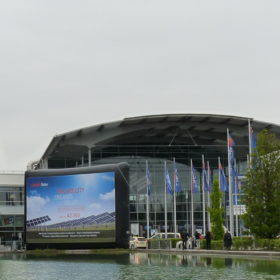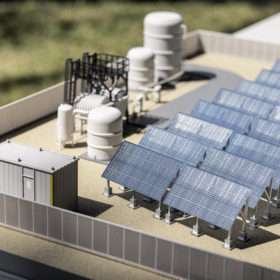Green and greener
Solar and other renewables are gathering pace as an alternative to heavily polluting fossil fuels – but they also require resources themselves, and produce both carbon emissions and waste during their life cycle. Here pv magazine presents an inventory of PV’s environmental footprint, and the efforts to improve it.
Customs arrests rock Intersolar Europe 2019
It’s a highlight of the European solar calendar and a famous PV event globally: the annual Intersolar show, part of The smarter E Europe exhibition and conference in Munich. But 2019’s event may go down with a degree of infamy, as German customs officers executed arrest warrants against two people in a case pertaining to the minimum import price undertaking. While many at the show were unaware of the controversy, pv magazine investigated what went down.
Pushing sustainability UP the agenda
As pv magazine’s UP campaign aims to place sustainability issues at the forefront of the solar industry, we take a look at the current situation and the programs, incentives and regulations that are in operation worldwide to promote responsibility in the design, operation and disposal of PV systems.
Southeast Asian manufacturing, bifacial technology to drive ET Solar’s resurgence
With new manufacturing facilities in Vietnam and Cambodia, a revitalized organization in the United States that is quickly racking up hundreds of megawatts in sales, and a portfolio of innovative products to serve both the on- and off-grid markets, ET Solar’s resurgence is taking shape in 2019.
Solar Power Mexico: rising to the challenge
Organizers of the Solar Power Mexico 2020 exhibition face a difficult task of replicating the success of the first edition of the event, which took place this year and had participation of 78 exhibitors and more than 5,000 visitors. Next year’s event will be held from March 24 to 26 at Centro Citibanamex in Mexico City.
Preparing for takeoff
With demand for lithium-ion battery cells picking up, largely driven by EVs but also from the fast-growing stationary storage segment, production capacities in China are ramping up quickly. But safety and quality must remain centrally important in the face of the need to scale, even more so after the numerous battery fires that shocked buyers globally and brought the South Korean market to a standstill. Clean Energy Associates (CEA) has launched the 2019 BESS Supplier Market Intelligence Program report, covering 40 suppliers, in an effort to support buyers navigating this novel supplier landscape. George Touloupas, CEA’s director of technology and quality for solar and storage, shares the company’s key findings on the supply chain and tells us what can have an impact on Li-ion safety and reliability.
48 hours in… Masdar City
As Abu Dhabi’s flagship sustainable urban community, Masdar City is a place where sustainability is a way of life. Since breaking ground in 2008, the low carbon development has transformed into a rapidly growing clean tech cluster, business free zone, and residential neighborhood, complete with shops, restaurants, and public green spaces that allow visitors, residents, and workers to live, work, and play sustainably.
“The first clear advantage is access to cells”
In October 2018, inverter supplier SolarEdge announced its decision to acquire 75% of South Korean battery manufacturer Kokam for $88 million. The move is indicative of power electronics manufacturers’ desire to strengthen their battery cell supply, and to capture more of the value stream. SolarEdge founder Lior Handelsman says that the low cobalt requirement of Kokam’s lithium-ion cell chemistry was one of the reasons the company was an attractive acquisition target.
Tapping new markets
The energy transition does not only change electricity generation, but ideally also how we consume. Electricity markets in Europe, however, must deal with legacy regulations that fail to incentivize ideal consumption patterns to reduce curtailment and make the best possible use of the renewable energy assets we have. The result is towering bills for ancillary services, that could easily be avoided with a few regulatory tweaks and virtual power plants.
Saline solutions
By 2030, according to the United Nations nearly half of the world’s population will be living in water-stressed areas if no preventive actions are taken. Water reuse technologies and measures to reduce water usage can only serve as temporary relief for the upcoming water crisis. Jiajun Cen, CTO at Desolenator, lays out the case for solar powered desalination as a solution.









